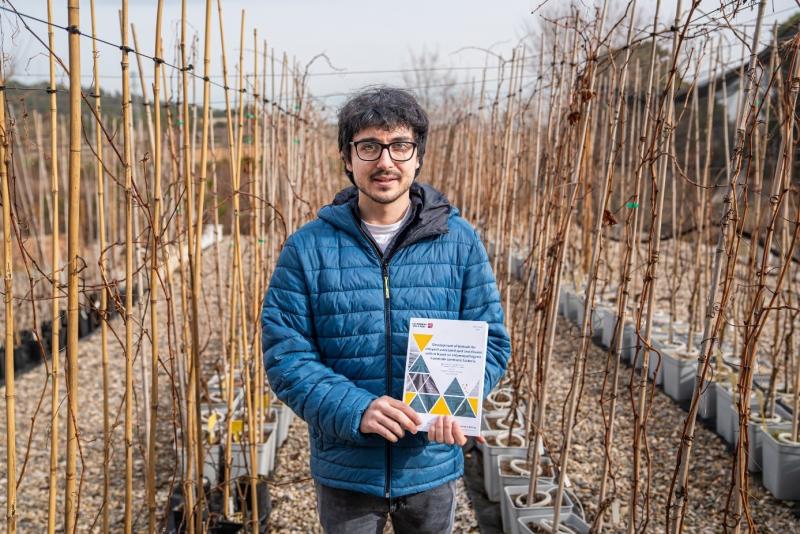The viticulture industry stands as one of the most crucial socioeconomic sectors globally. However, it faces many challenges, including climate change, environmental degradation, and severe outbreaks of pests and diseases. To address these challenges and safeguard vineyards, developing new, environmentally sustainable tools that maintain high grape production and quality standards is imperative.
A thesis at the University of La Rioja explored the potential of symbiotic bacteria associated with entomopathogenic nematodes, explicitly belonging to the gena Xenorhabdus and Photorhabdus, in managing pests and diseases. The study concluded that these bacteria hold significant promise as biocontrol agents for vineyard-related pests and diseases, offering a promising source of new biological tools for sustainable viticulture.
These findings emerge from the doctoral thesis of Ignacio Vicente Díez, who earned his doctorate from the University of La Rioja with the thesis titled 'Development of Biocontrol Tools for Vineyard Pests and Diseases Based on Symbiotic Bacteria of Entomopathogenic Nematodes.' Conducted within the IN-vid Research Group at the Department of Viticulture of the Institute of Grapevine and Wine Sciences (ICVV) - under the framework of the doctoral program: 783D Doctorate in Enology, Viticulture, and Sustainability (Royal Decree 99/2011) - and supervised by ICVV researchers Raquel Campos Herrera and Alicia Pou Mir, the thesis attained the calification of outstanding 'Cum Laude' with international recognition and was selected to apply for the Extraordinary award of PhD.
The thesis investigation focused on studying the potential of symbiotic bacteria of entomopathogenic nematodes, Xenorhabdus spp., and Photorhabdus spp., in producing a wide array of toxins with antibiotic properties for use in managing vineyard pests and diseases.
Specifically, the study examined the insecticidal capacity of compounds produced by these bacteria against two insect species: Philaenus spumarius (froghopper or spittlebug), the primary vector of Xylella fastidiosa, which causes Pierce's disease in grapevines and poses a significant threat to European agriculture; and Lobesia botrana (European grapevine moth). Regarding vineyard diseases, the research focused on controlling Botrytis cinerea, the pathogen responsible for noble rot in grapes.
Throughout the investigation, three types of products were obtained from the fermentation of the study bacteria under controlled laboratory conditions: soluble secondary metabolites released into the culture medium during bacterial secondary metabolism, organic volatile compounds that quickly evaporate at room temperature, and the isolated bacteria collected at the end of fermentation.
The results demonstrated that the soluble secondary metabolites exhibited insecticidal properties against grapevine moth larvae and spittlebug nymphs and antifungal activity against Botrytis cinerea. Organic volatile compounds derived from the fermentations of Xenorhabdus and Photorhabdus bacteria showed potential for pest control in vineyards by exhibiting repellent effects against grapevine moth larvae and adults. Furthermore, these volatile compounds were found to have preventive effects against both damaged and healthy grapes regarding rot. Finally, it was verified that the isolated bacterium P. laumondii possesses an antifungal capacity equivalent to some commercial biofungicides.
More info is available in the video: https://www.youtube.com/watch?v=6WA-fUa5dww&ab_channel=UniversidaddeLaRioja-Unirioja








